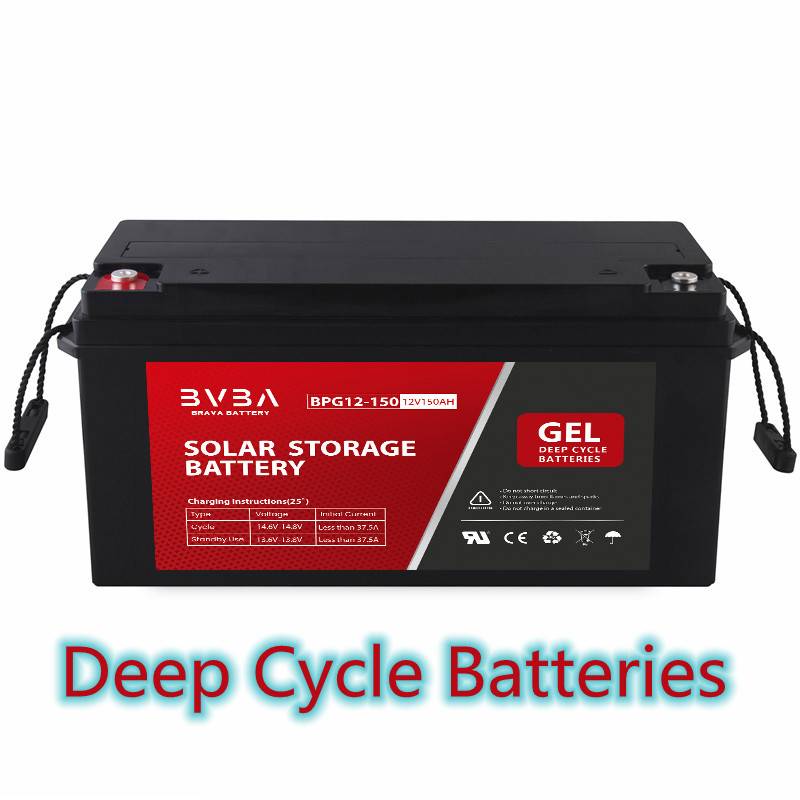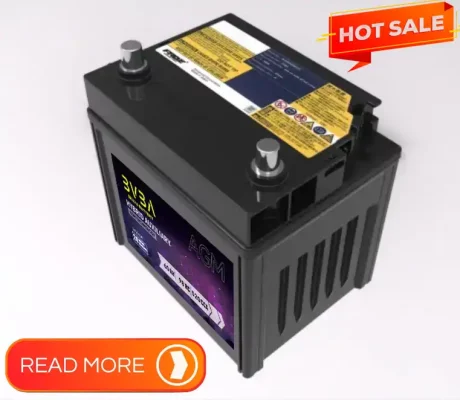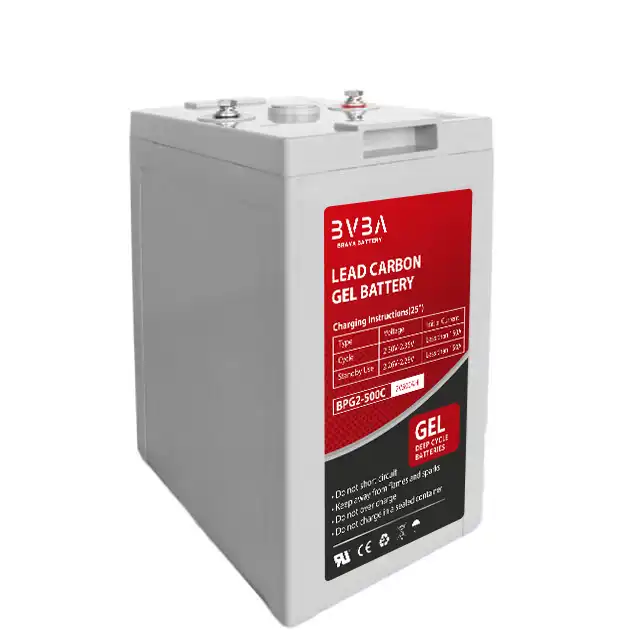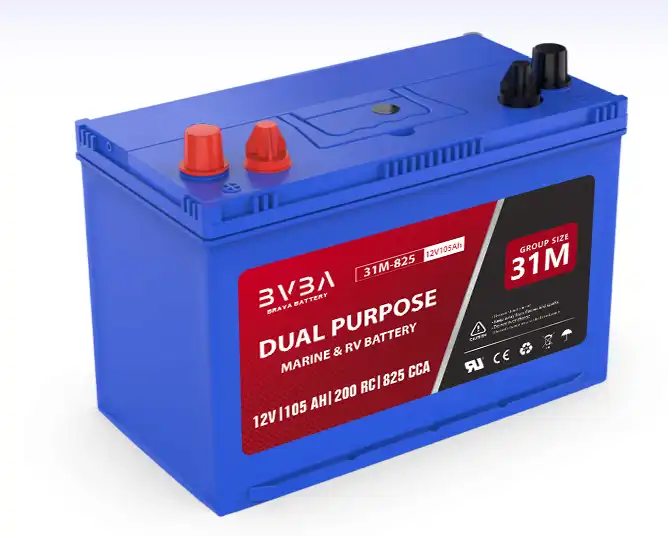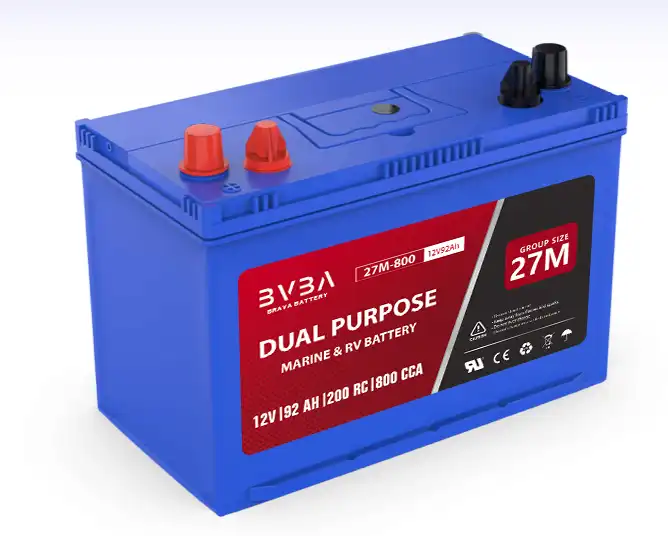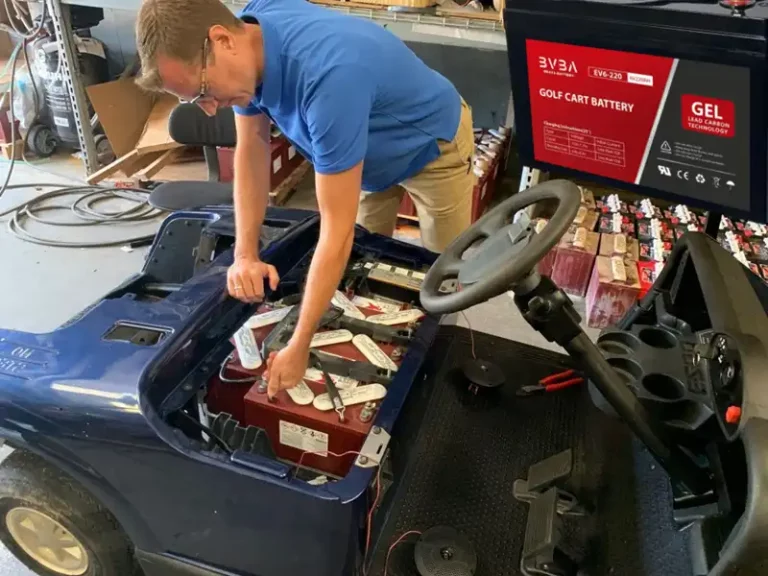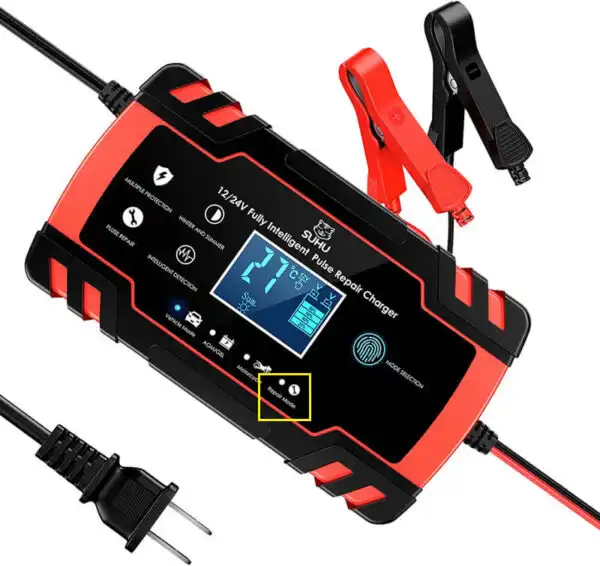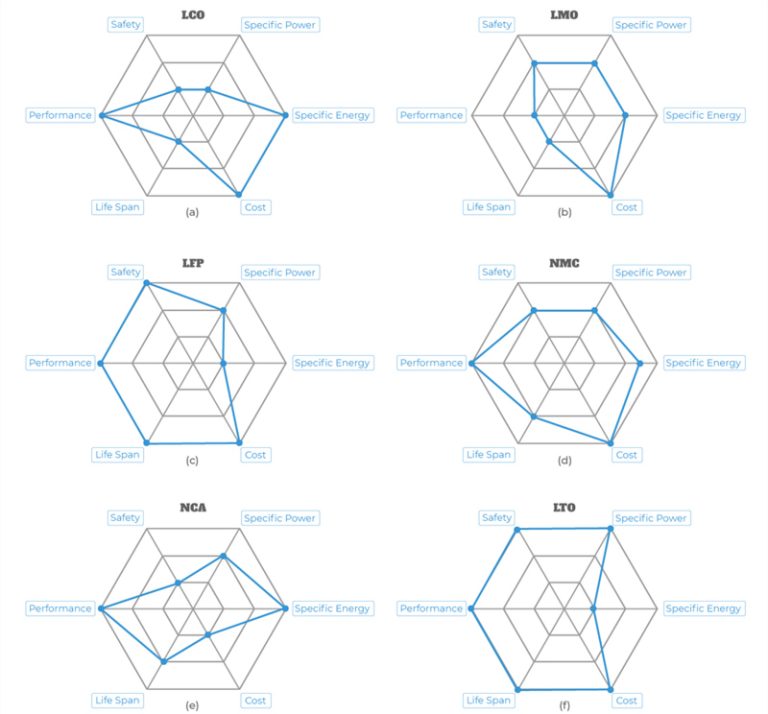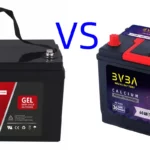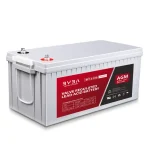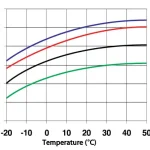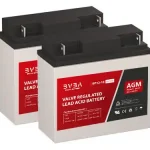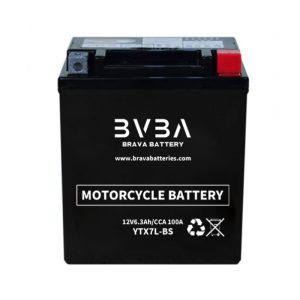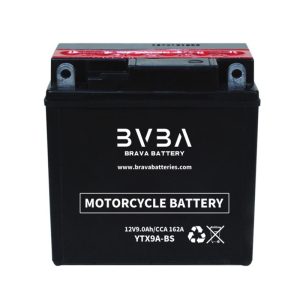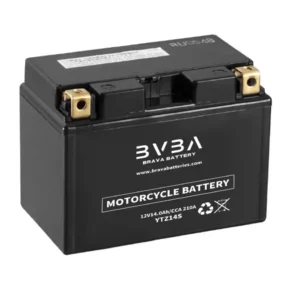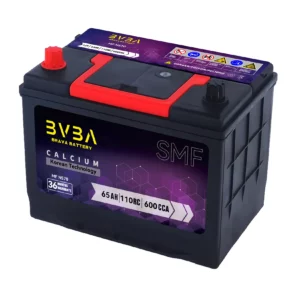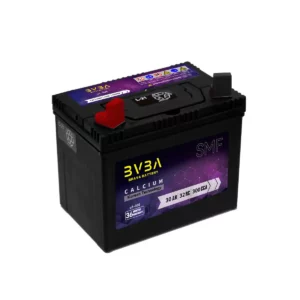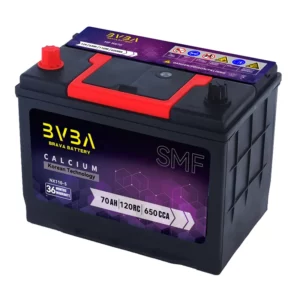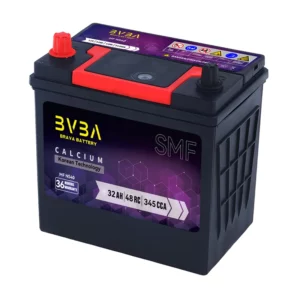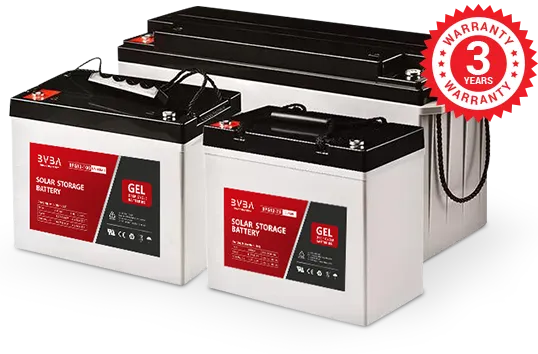Deep Cycle Batteries
Solar batteries provide energy storage for solar, wind power, or other renewable energy systems. A solar battery is just a deep cycle battery -batteries for solar panels are designed for the prolonged, repeated, and deep charging/discharging cycles needed to store and distribute energy generated by intermittent renewable sources like solar panels. For this reason, car batteries cannot be used as solar power batteries.
Grid tied systems do not need batteries unless you want to maintain power during utility grid outages. But for off grid systems, deep cycle solar batteries are essential and will likely be providing 100% of your electricity. This makes correctly sizing a solar battery bank among the most important steps of off grid system design .
What Does “Deep Cycle” Mean?
A deep cycle battery is a battery that is designed to produce steady power output over an extended period of time, discharging the battery significantly, at which point it must be recharged to complete the cycle. By contrast, a regular car battery is designed to provide a momentary burst of energy, typically enough to get your car started, before handing off power production to the alternator. In this case, the battery is not designed to be cycled because it should be kept fully charged at all times.
WHAT IS DEPTH OF DISCHARGE (DOD)?
DOD is the amount of energy that has been removed from the battery, which is expressed as a percentage of the total capacity of the battery. For example, 50% DOD means that half of the energy in the battery has been used. 80% DOD means that 80% of the energy has been discharged so the battery now holds only 20% of its full capacity.
How to Read Deep Cycle Batteries Specs
A deep cycle battery is rated by the number of complete cycles that it will provide, as well as the depth of discharge that is allowable, and the amount of amperage that it will produce steadily. For instance, a deep cycle battery listing will tell you that it produces 75 Amp-Hours for a period of 20 hours, and is rated for 1000 full cycles at 80% depth of discharge. These numbers tell you how long the battery will last, how far you should be discharging the battery, how long you can expect to go before you need a battery replacement, and what kind of power you can expect in the meantime. With an ignition lead acid battery, the rating that matters most is the cold cranking amps (CCA), which only tells you how much power the battery can produce in a single burst at 32 degrees.
Marine Deep Cycle Batteries
Types of Solar Batteries
A deep cycle solar battery is the only kind of battery that makes sense for a solar or wind system, but what about the different types of deep cycle batteries – lithium, flooded lead acid, AGM, and gel? Which kind is best?
While it’s true that each different cell chemistry has its pros and cons, it’s also true that lithium batteries are easily the best choice for most solar panel systems. Compared to all the other chemistries, lithium batteries are deeper discharging, longer-lasting, lighter weight, safer, and maintenance-free. Yes, they are more expensive up front than the other types, but in the long run, the cost per kWh cycle is the best metric to look at – and with both longer cycle life and deeper Depth of Discharge than the alternatives, the cost per kWh cycle you’ll get from a lithium solar battery bank is unbeatable – and you won’t have to replace them as often.
Lithium |
Flooded Lead Acid |
Sealed AGM |
Sealed Gel |
|
|---|---|---|---|---|
| Upfront Cost | High | Low | Moderate | High |
| Cost per kWh Cycle | Lowest | Low | Low to moderate | Moderate |
| Expected Lifespan | 10+ years | 3-5 years | 4-5 years | 5-6 years |
| Max Recommended DoD | 80% | 50% | 50% | 50% |
| Regular Maintenance | None | Watering, equalizing, cleaning | None | None |
| Best Applications | All renewable energy systems | Full-time residences with committed, hands-on owners willing to do regular maintenance and replacement | Part-time residences with intermittent use | Part-time residences without many high-surge loads |
| Worst Applications | Projects on a tight budget | Part-time residences with intermittent use | Systems requiring deep discharges | Systems requiring high-amperage charging and discharging |
Uses of Deep Cycle Batteries
We’ve already touched on the fact that familiar car batteries are starter batteries. So what are deep cycle batteries used for? In general, for anything that needs continuous power for longer periods of time.
- Electric golf carts
- Electric floor cleaning machines
- Electric scissor lifts
- Electric wheelchairs
- Electric scooters
- Electric forklifts
- Recreational Vehicles
- Trolling motors on boats
- Navigational devices on a boat (when the main motor is inactive)
- Renewable Energy systems
Deep Cycle Battery Discharge Capability
As mentioned, deeply discharging a starter battery will hurt its performance. However, deep cycle batteries not only are designed to put out power for a long period of time but also can discharge much more of their stored energy.
The amount you can safely discharge varies from battery to battery. Some batteries can only handle discharging 45% of their energy reserves, whereas others can safely discharge up to 100%.
Just be sure to check the manufacturer’s recommendation for your specific battery.
Tips For Maintaining The Deep Cycle Batteries
Here are a couple of pointers to keep your deep cycle batteries in optimal condition:
- Monitor charge levels: Start charging at 50% and don’t let the charge drop under 20%.
- Charge even when not in use: This will help to prevent sulfation and maintain battery life. Trickle charge your flooded, gel, and AGM batteries if you’re not using them for a long time (lithium batteries don’t require this).
- Rest the battery: Let the battery cool down after continuous use to avoid grid corrosion.
- Clean battery extremities: Keep the battery terminal and covers free of dust and corrosion.
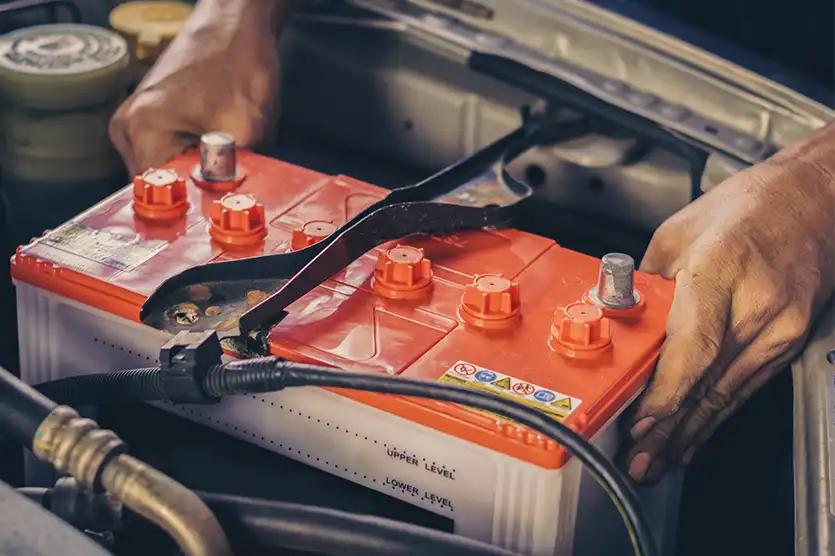
5 Tips For Using The Deep Cycle Batteries
1 – Select a deep cycle battery that suits the environment!
When choosing a deep cycle battery, many consumers focus on the price, physical size, weight or capacity of the product, without taking into consideration where the battery is located in the application.
• Near sensitive electronics – use a Yuasa AGM or SMF flooded battery. Avoid using maintainable batteries as the higher gassing rates can corrode and damage the electrics in the application.
• In confined spaces – use a Yuasa AGM or SMF flooded battery. Avoid using maintainable batteries as they can be difficult to check the fluid levels and may fail prematurely due to lack of maintenance.
• Under seats and sleeping areas – use a Yuasa AGM or SMF flooded battery. Hydrogen and oxygen gas produced from maintainable batteries can be damaging to your lungs and respiratory system when inhaled.
• When fitted under the bonnet – use a Yuasa maintainable/SMF flooded battery.
2 – Regularly check the state of charge in your battery!
When the battery is not in use, recharge it if the open circuit voltage (OCV) drops below 12.5 volts. Deep cycle batteries are not designed to be kept in a low state of charge and will build up sulphation on the battery plates that will reduce the performance and cycle life of the battery.
3 – Do not overfill maintainable deep cycle batteries!
If you have a maintainable battery, it’s important to check if the battery has sufficient electrolyte covering the battery plates. If topping up is required, do not over fill when the battery is discharged as the fluid levels will rise when the battery is charged and may overflow. Top up using distilled or demineralised water and never fill with sulphuric acid. When the battery is fully charged, fill to the bottom of the spout extensions.
4 – Never fully discharge a deep cycle lead acid battery!
The deeper you discharge the battery the more it will reduce the battery’s total cycle life. We recommend discharging a battery to no lower than 50% DOD, with a maximum of 80%. If you discharge the battery to 50% of its capacity instead of 100%, the battery will produce an extra 40% more amperes over the life of the battery.
5 – Always ensure the charging settings match the battery!
Go to the product: deep cycle batteries
Tag in this article: #Deep-cycle Battery
Tips: more detail information, for deep cycle batteries.

